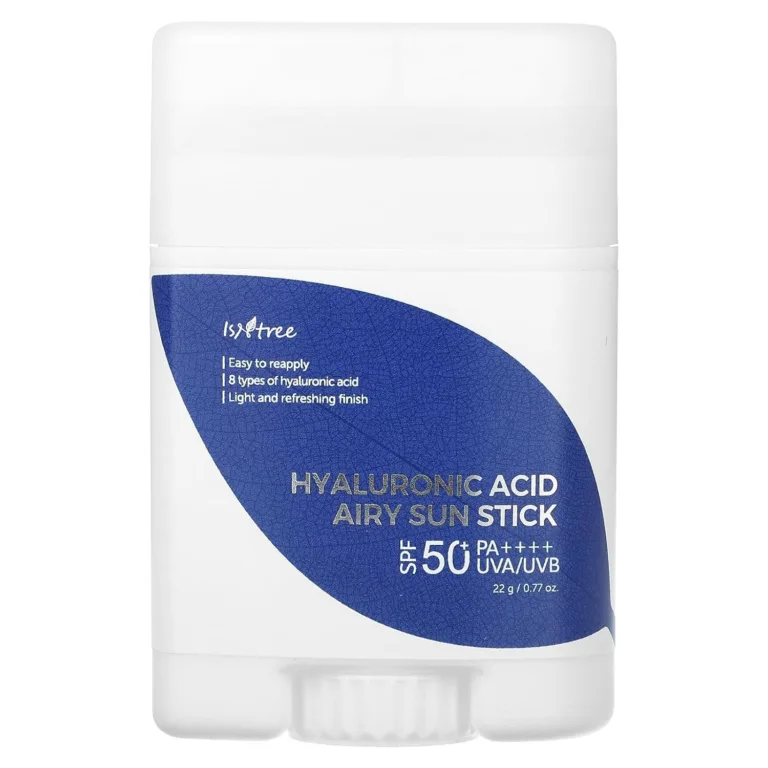Ever forget to apply sunscreen before heading out the door, or struggle to reapply on a windy beach? Sunscreen sticks offer a convenient and mess-free solution to sun protection, making them ideal for busy lifestyles and active individuals. But are they as effective as traditional lotions and sprays?
Sun protection is a crucial element of any skincare routine. The sun’s harmful UV rays can cause premature aging, wrinkles, and even increase the risk of skin cancer. Thankfully, sunscreens act as a shield, absorbing or reflecting these rays to keep your skin safe.
This blog will delve deeper into the world of sunscreen sticks. We’ll explore their:
- Benefits and drawbacks: Compared to other sunscreens, what makes sticks unique?
- Types and considerations: What factors should you consider when choosing a sunscreen stick?
- Application tips and tricks: Learn how to effectively apply sunscreen sticks for optimal protection.
By the end of this blog, you’ll be equipped with the knowledge to choose and use sunscreen sticks confidently, ensuring sun-safe and radiant skin throughout the year.
Table of Contents
ToggleUnderstanding Sunscreen Sticks


Sunscreen sticks are solid sunscreens housed in a convenient, twist-up applicator, resembling a deodorant stick.They glide smoothly onto the skin, offering an easy and mess-free way to apply sunscreen, particularly on areas like the face, ears, and lips. They offer broad-spectrum protection against UVA and UVB rays, safeguarding your skin from sun damage,premature aging, and even skin cancer.
Comparison with Other Formulations
While sunscreen sticks share the same goal as other sunscreen products like creams, lotions, and sprays, each has its unique advantages and limitations:
- Creams and Lotions: These offer good coverage and are easy to spread over large areas. However, they can be messy to apply, especially on the go, and might not be ideal for oily skin.
- Sprays: Convenient for quick application, but can be easily inhaled, are less environmentally friendly, and may not offer even coverage.
- Sticks: They are portable, mess-free, and ideal for targeted areas like the face, ears, and lips. However, ensuring even coverage on larger areas can be difficult.
Key Ingredients and Their Roles
Sunscreen sticks contain a combination of ingredients to achieve sun protection:
- Active Ingredients: These include mineral (zinc oxide, titanium dioxide) or chemical filters (octinoxate, oxybenzone) that absorb or reflect UV rays.
- Emollients: These help the product glide smoothly onto the skin and provide a comfortable feel. Examples include shea butter and petrolatum.
- Thickeners: These give the stick its solid form and ensure even application. Waxes are commonly used.
Benefits of Using Sunscreen Sticks:
- Portable and convenient: Easy to carry and reapply throughout the day, especially during outdoor activities.
- Mess-free: No need for messy hands, making them ideal for on-the-go use.
- Targeted application: Perfect for applying to specific areas like the face, ears, and lips.
- Water-resistant: Many sticks offer water resistance for added protection during water activities.
However, it’s important to remember that sunscreen sticks might not be ideal for everyone, particularly those with concerns about even coverage on large areas or those prone to breakouts due to certain ingredients.
While sunscreen sticks provide numerous benefits, it’s important to be aware of their limitations and use them in conjunction with other sun protection measures like hats, sunglasses, and seeking shade.
How Sunscreen Sticks Work: Protecting Your Skin from the Sun
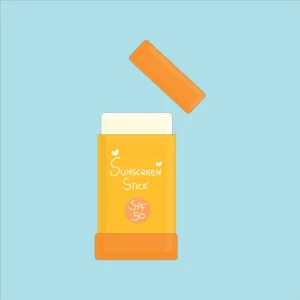

Sunscreen sticks, despite their convenient and user-friendly format, offer the same level of sun protection as other sunscreen formulations when used correctly. Understanding the science behind their effectiveness is crucial for maximizing their benefits.
Understanding SPF (Sun Protection Factor):
The Sun Protection Factor, or SPF, is a numeric rating system indicating a sunscreen’s ability to shield your skin from ultraviolet B (UVB) rays. These rays are the primary culprit behind sunburns, tanning, and contribute to photoaging (premature aging caused by sun exposure).An SPF of 30 signifies that the sunscreen will filter out approximately 97% of UVB rays, while an SPF of 50 blocks roughly 98%.
It’s important to understand that SPF is not a measure of total sun protection or duration of protection. Regardless of the SPF, all sunscreens need to be reapplied every two hours, or more frequently if swimming or sweating. Additionally, SPF values offer diminishing returns, with the benefit of increasing from SPF 30 to 50 being relatively small.
UVA and UVB: The Two Faces of UV Radiation
Sunlight comprises various wavelengths, including visible light and invisible ultraviolet (UV) radiation. UV radiation is further divided into UVA and UVB rays, both of which contribute to sun damage:
- UVB rays: These have shorter wavelengths and are responsible for sunburns, tanning, and some skin cancers.
- UVA rays: These have longer wavelengths and penetrate deeper into the skin, contributing to premature aging, wrinkles, and can also suppress the immune system.
While SPF ratings only indicate protection against UVB rays, broad-spectrum sunscreens, including most sticks, offer protection against both UVA and UVB rays. This is crucial, as UVA rays penetrate deeper and contribute significantly to long-term skin damage.
The Mechanism of Action: How Sunscreen Sticks Block UV Radiation
Sunscreen sticks, like other sunscreens, employ two main mechanisms to protect your skin from UV rays:
- Absorption: Certain ingredients in the sunscreen, primarily chemical filters, absorb UV radiation like a sponge. The absorbed energy is then converted into heat, which is safely released from the skin. Examples of common chemical filters include oxybenzone, avobenzone, and octinoxate.
- Reflection: Other ingredients, primarily mineral filters like zinc oxide and titanium dioxide, act like tiny mirrors, reflecting UV rays away from the skin and preventing them from penetrating.
Sunscreen sticks typically utilize a combination of both chemical and mineral filters to offer broad-spectrum protection against both UVA and UVB rays. This comprehensive approach is crucial for optimal sun protection
Applying and Reapplying Effectively
Remember, even with the best sunscreen, achieving complete protection from UV rays is impossible. To maximize the effectiveness of sunscreen sticks:
- Apply generously and evenly to all exposed skin, including the ears, lips, neck, and tops of the feet, 15 minutes before sun exposure.
- Reapply every two hours, or more frequently if swimming or sweating.
- Be mindful of areas that might be easily missed, such as around the eyes and nose.
By understanding the science behind how sunscreen sticks work and practicing proper application techniques, you can ensure optimal sun protection and safeguard your skin’s health.
Choosing the Right Sunscreen Stick:


Sunscreen sticks offer a convenient sun protection solution, but choosing the right one for your individual needs is crucial. Here’s what to consider:
Considerations for Different Skin Types:
- Dry Skin: Look for sticks with hydrating ingredients like hyaluronic acid or ceramides, or shea butter. Avoid formulas with alcohol, which can be drying.Opt for creamier formulas that offer better moisture retention.
- Oily Skin: Choose oil-free, non-comedogenic sticks (meaning they won’t clog pores) with mattifying ingredients like silica or kaolin clay to control shine. Look for ingredients like zinc oxide, which can help control oil. Lightweight, water-based, matte-finish formulas are also a good option.
- Sensitive Skin: Opt for fragrance-free, mineral-based sticks with calming ingredients like aloe vera or centella asiatica. UV filters like zinc oxide and titanium dioxide are less likely to irritate, Look for hypoallergenic formulas tested for sensitive skin.
- Combination Skin: You might need to experiment with different formulas to find one that suits both oily and dry areas. Consider sticks with balanced ingredients or using a separate moisturizer for dry areas.
Factors to Look For:
- SPF Level: The Sun Protection Factor (SPF) indicates how well the sunscreen protects against UVB rays, the primary cause of sunburn. Choose an SPF of 30 or higher for daily use, and SPF 50+ for extended sun exposure or if you have concerns about premature aging.
- Water Resistance: If you plan on sweating or swimming, opt for a water-resistant sunscreen stick. Look for labels mentioning “40 minutes of water resistance” or “80 minutes of water resistance.” Remember to reapply after swimming or excessive sweating, regardless of water resistance claims.
- Broad-Spectrum Protection: Ensure the sunscreen stick offers broad-spectrum protection, meaning it protects against both UVA and UVB rays. UVA rays penetrate deeper into the skin and contribute to premature aging and skin cancer.
Popular Sunscreen Sticks in India:
It’s important to note that this is not an exhaustive list and recommendations may vary based on individual needs and preferences. Always consult with a dermatologist for personalized advice.
Few recommendations of the Best sunscreen sticks for 2024:
CeraVe Sunscreen Stick is a broad-spectrum SPF 50 sunscreen with mineral-based UVA and UVB protection. It is fragrance-free, oil-free, and suitable for all skin types, including sensitive skin. The stick is formulated with ceramides to help restore the skin’s natural barrier and is water-resistant for up to 40 minutes. It is easy to apply and leaves a clear finish.
Aveeno Protect + Soothe Mineral Sunscreen Stick is a travel-friendly sunscreen designed for sensitive skin. It has SPF 50 for broad-spectrum protection against UVA and UVB rays. Made with naturally sourced zinc oxide and calming oat essence, this fragrance-free sunscreen stick is water-resistant for up to 80 minutes and glides on smooth for mess-free application.
Beauty of Joseon’s Matte Sun Stick: Mugwort+Camelia is a sunscreen formulated as a convenient stick for easy application and reapplication throughout the day.
Here are some key features:
- SPF 50+ PA++++ protection: It offers broad-spectrum protection against UVA and UVB rays.
- Matte finish: The formula is lightweight and non-greasy, leaving a matte finish without feeling sticky.
- Sebum control: Silica powder helps control oil and shine, making it suitable for oily and combination skin.
- Hydrating ingredients: Mugwort and green tea extracts help soothe and hydrate the skin.
- Portable and convenient: The stick format makes it easy to carry and reapply sunscreen on the go, even over makeup.
Neutrogena Beach Defense Sunscreen Stick Broad Spectrum SPF 50+
- Broad spectrum SPF 50+ protection against UVA and UVB rays
- Helps prevent sunburn and reduce the risk of skin cancer and early skin aging when used as directed with other sun protection measures
- Water-resistant (up to 80 minutes)
- Easy, mess-free application with a convenient stick format
- Suitable for face, neck, and shoulders
- Broad-spectrum SPF 50+ PA++++ protection: Protects against UVA and UVB rays
- Hyaluronic acid: Infused with 8 types of hyaluronic acid for deep hydration
- Soothing and cooling: Contains ice plant extract, bamboo water, kelp extract, and aloe vera extract to soothe and cool the skin
- Portable and easy to apply: Stick design makes it convenient for on-the-go use
- Reef-safe and non-nano: Free of ingredients that can harm coral reefs and made with non-nano particles
Remember: When choosing a sunscreen stick, always perform a patch test on a small area of your skin before applying it to your entire face. This helps identify any potential allergic reactions.
Add Your Heading Text Here
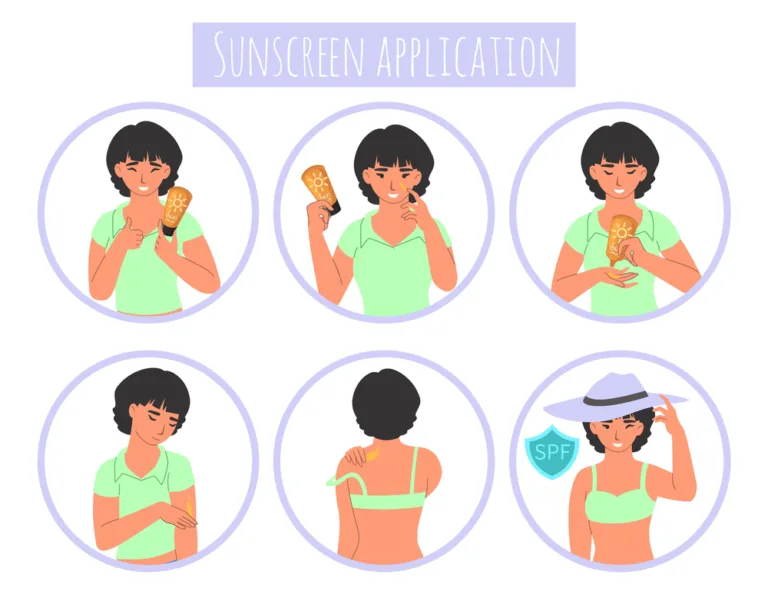

Sunscreen sticks offer a convenient and effective way to protect your skin from the sun’s harmful UV rays. However, for optimal protection, proper application and integration into your skincare routine are crucial. Here’s how to seamlessly incorporate sunscreen sticks into your daily regimen:
Applying Sunscreen Sticks:
- Cleanse and moisturize your face: Start with a clean and dry face for optimal product absorption. Apply your usual moisturizer, allowing it to dry completely before applying sunscreen.
- Twist up the stick: Extend the product by twisting the dial at the bottom.
- Apply generously: Swipe the stick directly onto your face, covering areas like your forehead, cheeks, nose, and chin. Don’t forget your ears, lips, and the delicate under-eye area.
- Use a dabbing motion: Instead of dragging the stick, gently dab the product onto your skin to ensure even distribution.
- Repeat application: Apply a second layer to areas that require extra protection, like your nose and cheeks.
- Blend gently: Use your fingertips to gently blend the sunscreen into your skin without rubbing.
Reapplication Tips:
- Reapply every two hours: This is crucial, especially after sweating, swimming, or toweling dry.
- Focus on exposed areas: Pay close attention to areas exposed to direct sunlight, such as your face, neck, ears, and hands.
- Carry your sunscreen stick: Keep it readily accessible to encourage frequent reapplication.
- Reapply even on cloudy days: Up to 80% of UV rays can penetrate clouds, so sun protection remains crucial.
- Blot excess sweat before reapplying: Reapplying on a sweaty surface can dilute the sunscreen’s effectiveness. Gently pat your face with a towel before reapplying.
Layering with Other Skincare Products:
- Sunscreen sticks can be used after your moisturizer: Ensure your moisturizer has fully absorbed before applying the sunscreen stick.
- Apply makeup after sunscreen: Allow the sunscreen to dry completely before applying makeup. This will help prevent the makeup from sliding or smudging.
- Look for mineral-based sunscreen sticks: These may be gentler on sensitive skin and less likely to clog pores compared to chemical-based sunscreens. However, always patch test any new product on a small area of your skin before applying it to your entire face.
Additional Tips:
- Choose a sunscreen stick with a broad-spectrum SPF of 30 or higher.
- Look for water-resistant sunscreen sticks if you plan on sweating or swimming.
- Look for ingredients that are non-comedogenic, meaning they won’t clog your pores, if you are prone to breakouts.
- Be mindful of the expiration date on your sunscreen stick and replace it every year.
Common Mistakes to Avoid:
- Under-application: Using insufficient sunscreen significantly reduces its effectiveness. Aim for a visible white cast for mineral sunscreens or a generous, even layer for chemical formulations.
- Missing areas: Neglecting areas like ears, lips, and the tops of your feet leaves them vulnerable to sun damage.
- Forgetting reapplication: Sun protection diminishes over time, especially with sweat and water exposure. Consistent reapplication is vital for sustained protection.
- Relying solely on sunscreen: Sun-protective clothing, hats, and seeking shade offer additional layers of defense, especially during prolonged sun exposure.
Additional Sun Safety Tips for Outdoor Activities:
- Check the UV index: The higher the index, the stronger the sun’s rays and the more diligent you need to be with sun protection.
- Hydrate: Staying hydrated helps regulate your body temperature and protects your skin from sun damage.
- Be mindful of water resistance: Not all sunscreen sticks are water-resistant. Check the label and reapply more frequently after swimming or sweating.
- Protect your eyes: Wear sunglasses that block UVA and UVB rays to shield your eyes from sun damage.
Conclusion
In conclusion, sunscreen sticks offer a unique and convenient option for sun protection. They boast numerous benefits, including:
- Unmatched portability and ease of use: Perfect for on-the-go sun protection and reapplication, making sun safety more accessible.
- Mess-free application: No need to worry about spills or greasy hands, ideal for active individuals and travel.
- Targeted application: Ensures precise coverage on sensitive areas like the face, ears, and lips.
- Water-resistant options: Some sticks are suitable for water activities, offering extended protection during outdoor adventures.
While they might not be the perfect solution for everyone, sunscreen sticks can be a valuable addition to any sun protection regimen.
It’s crucial to remember that sun protection is an essential component of a comprehensive skincare routine. Regardless of your skin type or lifestyle, taking proactive measures to shield your skin from the sun’s harmful UV rays is vital for maintaining long-term skin health and minimizing the risk of premature aging and skin cancer.
We encourage you to prioritize sun safety by incorporating sun protection into your daily habits. Choose a sunscreen form that suits your needs and preferences, and remember to reapply liberally throughout the day, especially after swimming, sweating, or toweling dry. By taking these simple steps, you can ensure your skin stays healthy and radiant for years to come.

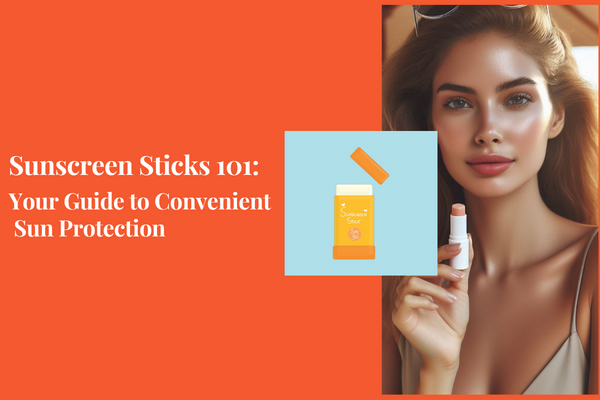
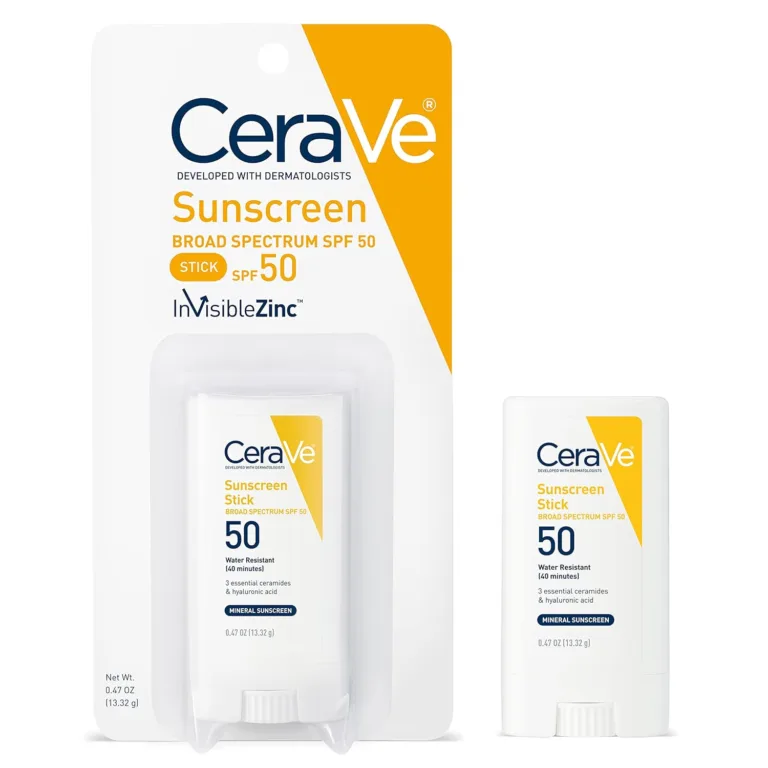

![[Beauty of Joseon] Matte sun stick : Mugwort+Camelia](https://auraaskincare.in/wp-content/uploads/2024/03/Beauty-of-joseon-sunscreen-768x768.webp)

